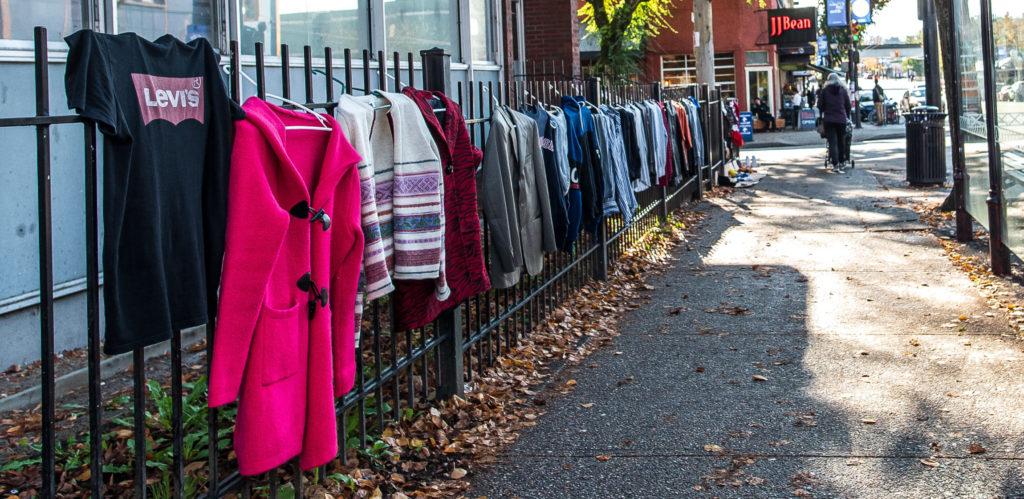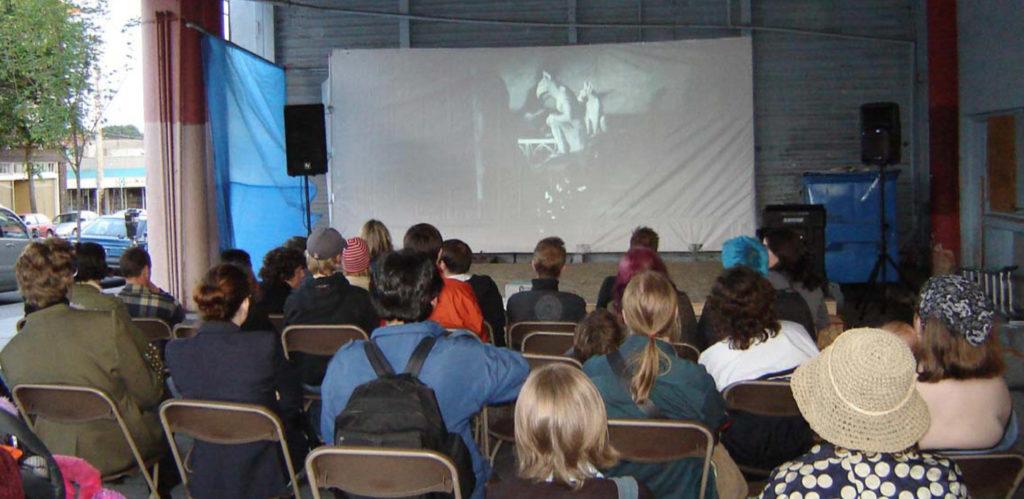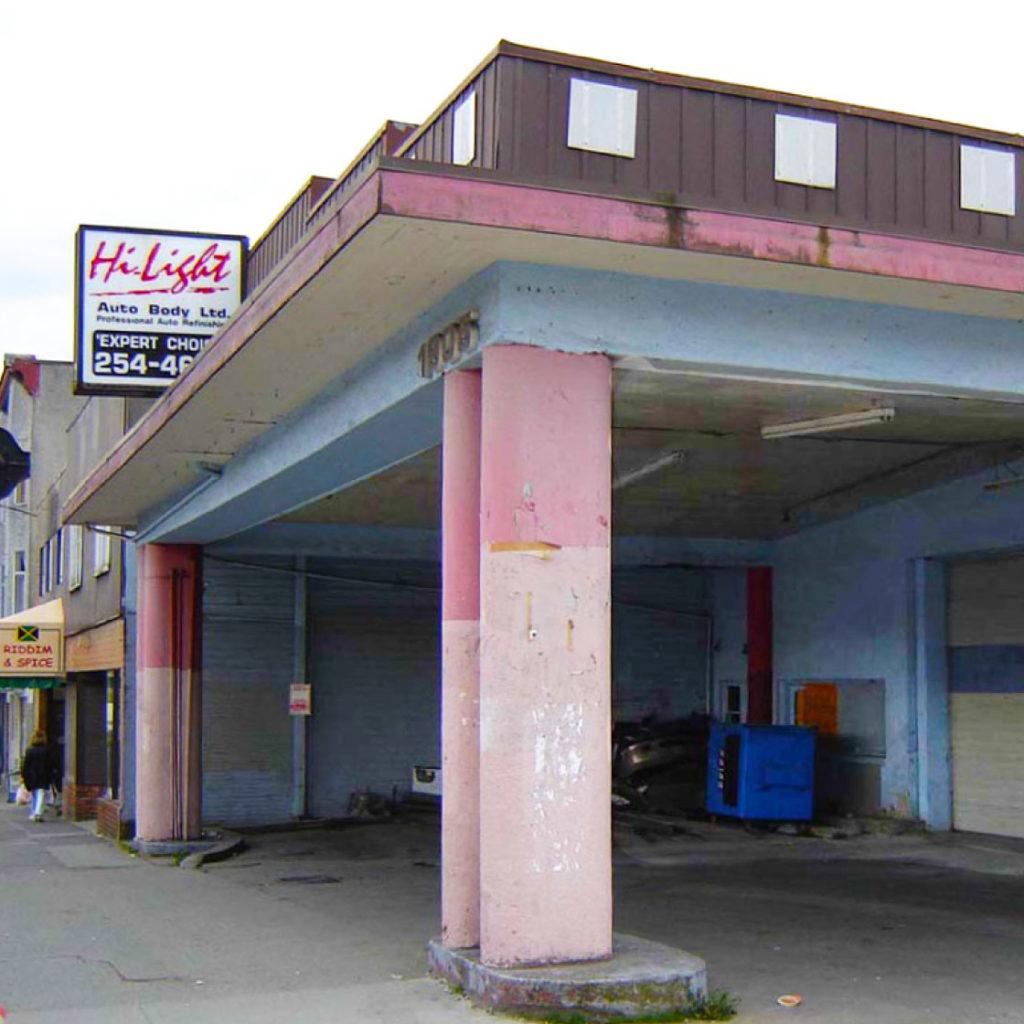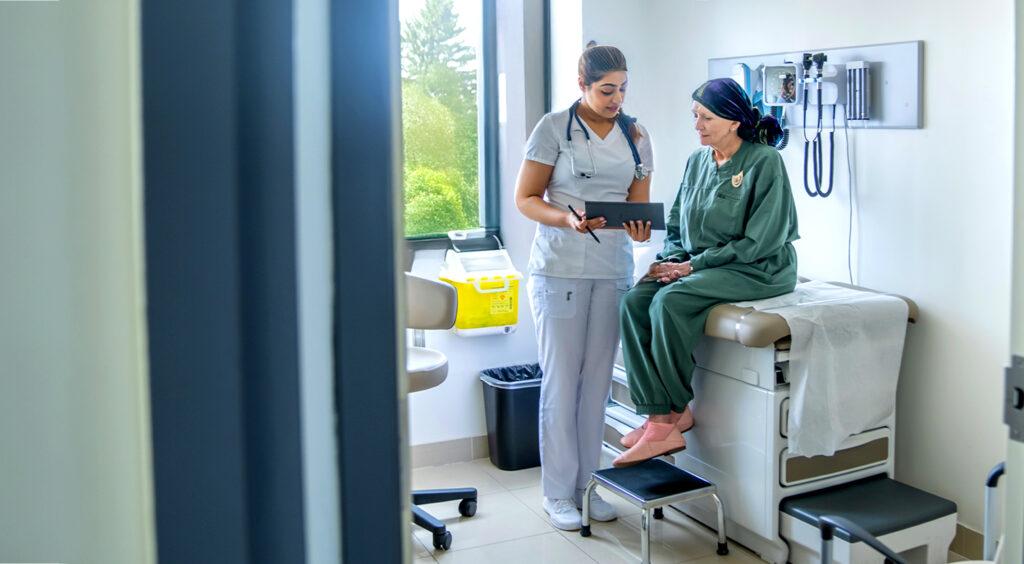Making the most of neglected urban spaces
By Carolyn Ali

You might be surprised at how people could transform pockets of city land
You’ve probably walked right past these spots all around the city, unaware of their potential. An alleyway littered with pop cans. The area under an elevated transit line. A v-shaped wedge of grass where two streets converge.
But with a little vision and creativity, we could use these spaces to boost the economy, create social gathering areas and help the environment.
That’s according to Erick Villagomez, an urban planning expert who teaches at UBC’s School of Community and Regional Planning. Right now, he says, we collectively ignore a lot of these “residual spaces.” But if people started to use urban areas in creative ways — and the city sanctioned these activities — we could all reap the benefits.
Change from the bottom up
People are already using public spaces in creative ways — they’re just doing it quietly. Think about the vendor who lays out books for sale in an empty plaza near a transit station. The artist who sets up an easel near a park, selling her paintings to passersby. Or the retiree who plants a garden near the railroad tracks across from his house.

“It happens from the bottom up,” says Villagomez. “People see a gap between buildings, unused lane or the area around a road and see an opportunity to make something of it.”
As cities become denser and land more valuable, every square foot becomes attractive for commercial or social activity. He points to Portland, where food trucks set up shop in empty parking lots, and Tokyo, where a community built an informal open-air movie theatre under an elevated highway.
“At a base level, we need to use land more efficiently.”
Erick Villagomez, instructor at UBC’s School of Community and Regional Planning
“At a base level, we need to use land more efficiently,” Villagomez says. “A lot of these spaces could be rethought. Why are they just sitting fallow? We could do something with them.”
Social magnets
One of the most common ways people activate these residual spaces is by sprucing up the areas around where they live. Villagomez gives the example of a family that hung a tree swing on the side of a quiet residential street in Delta; that simple act created a neighbourhood gathering spot. “Things like that are social magnets,” Villagomez says. When the city stepped in, neighbours petitioned to keep the swing and it was officially sanctioned.
He also points to an area under the SkyTrain line at Commercial and East 11th Avenue in Vancouver. Neighbouring residents mobilized the community to transform the garbage-strewn site into a garden, which they built and cared for. It was eventually approved by the city, and expanded with a playground, now officially called Larry Young Park and Local Heroes Pathway and still cared for by the community.
Indeed, once people see the vision for a public space, they rally to support change. As part of the Vancouver Urban Design Forum, Villagomez’s group obtained city permission to transform a graffiti-sprayed laneway off Commercial Drive. The group painted murals on the wall and lay grass and paving stones to illustrate the potential. When neighbours learned that the group was required to return to space to its original state after the event, they petitioned the city successfully to make the changes permanent.
“There’s a lot of stuff that could happen in a space that’s three-and-a-half feet wide.”
Erick Villagomez
Any activity on public land undertaken without city permission risks being shut down by authorities. Therein lies the tension of citizens activating residual spaces. Different regulations apply to private land, but these spaces also hold a lot of potential for creative use. For example, Villagomez’s group worked with an autobody shop on Commercial Drive to transform the open-air garage into an evening cinema to show the community the potential of empty urban spaces. In addition to social benefits, beautifying public spaces can also help the environment. Greenspace maintained by the community, such as community gardens and gardens in traffic circles, add to our urban forest. Rain gardens, planted near a sewer, can slow and capture storm water that would otherwise enter drains and pollute our oceans, and combat flooding. Collectively, these green initiatives help to cool our cities and fight climate change.
Economic incubators
We could also be making use of residual spaces for economic purposes, says Villagomez. He notes the potential for informal sidewalk commerce. A narrow alleyway, for example, could offer people the opportunity to sell items that could be displayed on a wall, such hanging art or T-shirts. “There’s a lot of stuff that could happen in a space that’s three-and-a-half feet wide.”
However, there’s also the potential for conflict with brick-and-mortar businesses. Yet Villagomez says that vendors who occupy a space without permission are usually strategic about choosing their location.
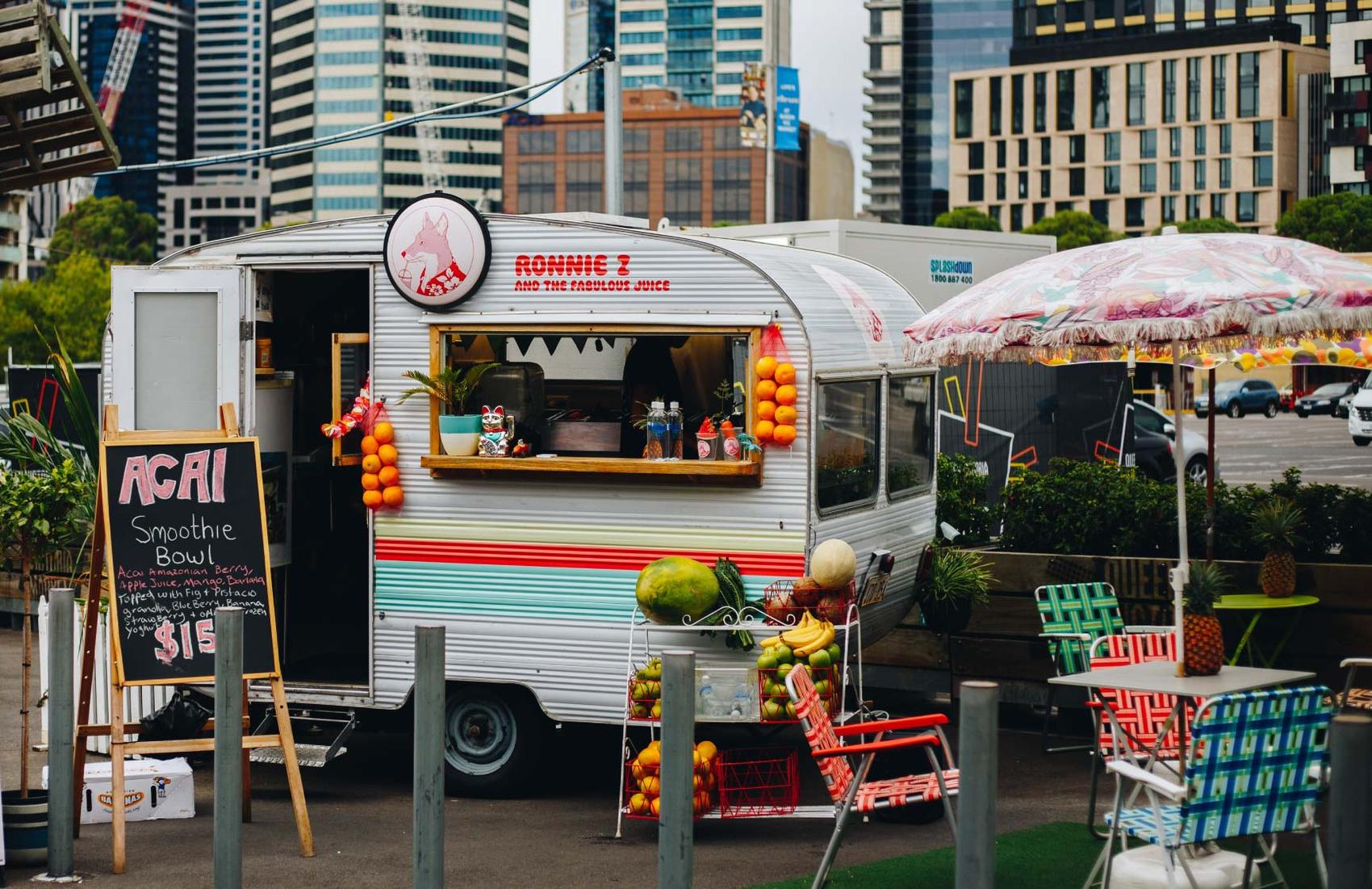
“They will not set up in front of other stores simply because the store owner will shut them down,” he says. “So they start filling these unused gaps. You see it at the edges of parks that front commercial streets. They can use these spaces because nobody really cares about them—they’re just there.”
“The city can go and shut them down,” he acknowledges. “But they usually don’t. So in that way, there’s a little bit of tolerance. But that’s not codified. It’s illegal.”
If regulations changed, however, Villagomez says that these spaces could offer would-be entrepreneurs an opportunity to test their ideas, and to help jump-start the economy in the wake of COVID-19.
“Allowing people to have different ways of being an entrepreneur in different types of spaces, or to make it less expensive, benefits everybody.”
Erick Villagomez
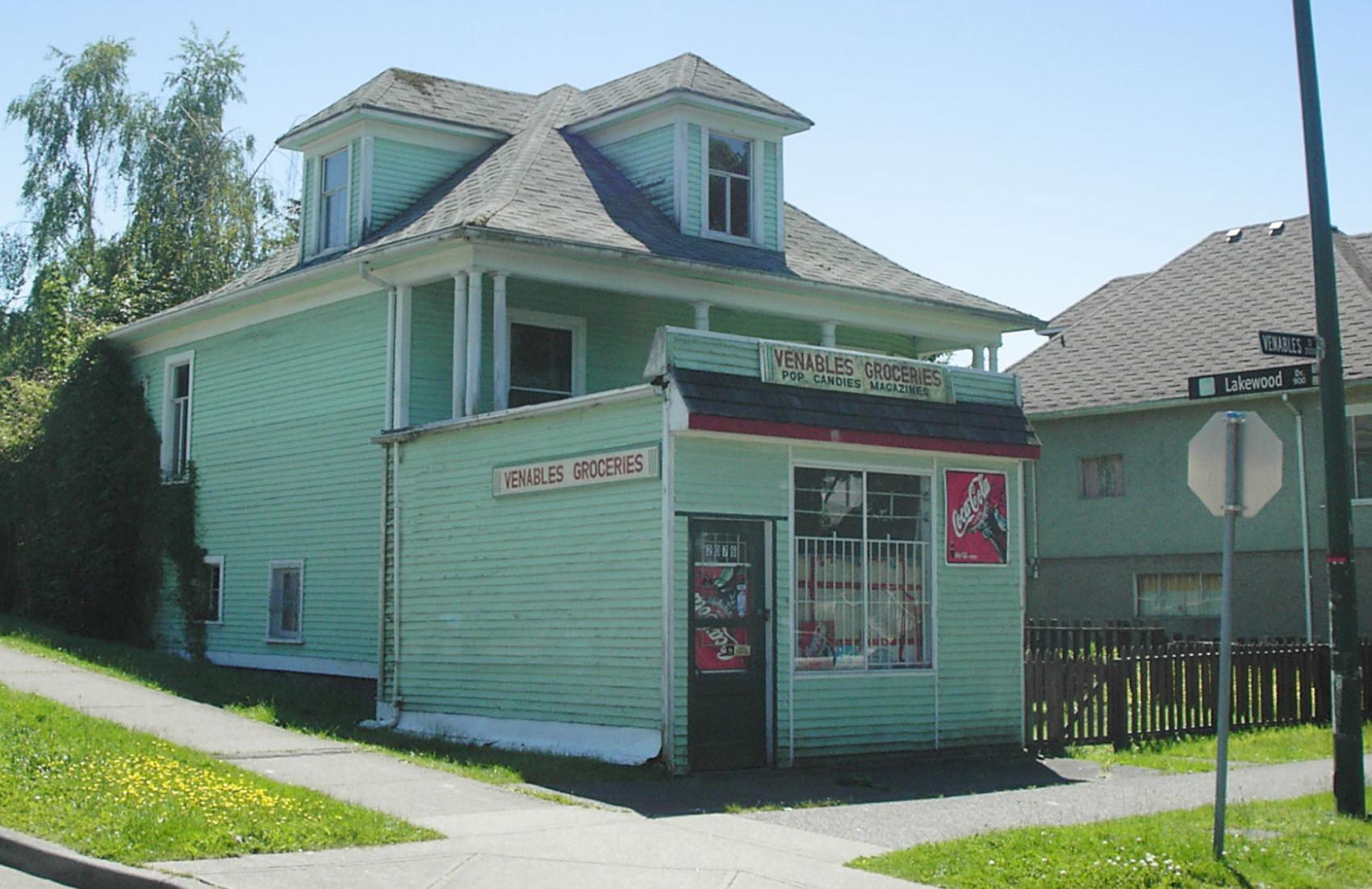
“These spaces can act as commercial incubators,” he says. “To rent an official space within a building and to go through official channels is very expensive. Allowing people to have different ways of being an entrepreneur in different types of spaces, or to make it less expensive, benefits everybody.”
He points to the example of Portland food trucks, which originally set up shop without permission in parking lots and were eventually were sanctioned, and now celebrated, by the city.
Change from top down
Of course, city regulations exist to protect the health, safety and economic interests of everyone within. So Villagomez advocates a blend of “bottom up” and “top down” change.

“It starts by recognizing the potential,” he says. “We have these residual spaces. What can we do with them?” He would like to see cities proactively seek out ideas for what people are already doing with urban spaces, and then relax regulations to officially sanction these activities.
“I appreciate the activist approach,” says Villagomez, “but in the end you need buy-in from the top down. Only then can these ideas have longevity.”
Carolyn Ali is a staff writer for UBC Brand and Marketing.
A previous edition of this story included a depiction of a Big Love Ball installation by artist Wendy Williams Watt.
